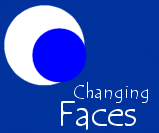Methods
The methods we used on this project were innovative in several ways. First we inked together different data sources, both qualitative and quantitative: statistical summaries and oral history accounts. We included visual records as well as written ones. Secondly, we were committed to using collaborative and participatory methods in shaping this historical account, working with individuals and groups to share data collection decisions and interpretations of the materials that were generated. This section describes the methods we used.
We have developed a set of timelines that offer a chronology of key events and people. We are adding "themed" timelines to these as we continue the analysis and we welcome contributions to these.
Developing the Methodology for Interviews
Piloting
The face-to-face interview questions for practitioners and policy actors were piloted with people with experience of prison education, volunteering, maths education, London inner city literacy, part-time tutoring, adults with special learning needs, college basic education provision, media campaigns. The piloting exercise was valuable for a number of reasons:
- It provided the researchers an opportunity to try out the questions to see what worked and what did not. It also gave an indication of what could be realistically covered in an hour.
- The pilot interviews were useful in identifying contacts to follow up for the research. Some of the people mentioned are now on the lists for case site areas.
- It is important for consistency and future analysis to have a set of questions that are covered by all the interviewers.
- There were some people who did not want the interview to be tape recorded thus some of the interviews were recorded through interviewer notes and not verbatim.
- It helped us develop guidelines for transcription.
- Ethical issues were raised such as those interviewees who do not want their recorded interview to go into the public archive at present.
The adult learners interview for use with NCDS respondents was piloted with six people at Stoke Learning Centre, four literacy students in Leyton and two members of the NCDS cohort. We modified the questions and structure of the interview schedule as a result of this. The final interview schedule and showcards are attached.
Interview Protocol
See the Interview Protocol page.
We spent some time developing an interview protocol that would enable us to pursue parallel themes across the different kinds of interviews we carried out and also to adopt the same practical procedures in collecting and storing the data. Making thematic links across policy, practitioner and NCDS adult interviews was not easy. In addition to the general, analytical themes listed in the original proposal, we dentified a number of aspects of the learning/teaching process to be pursued as appropriate across the interviews, using selected questions from a "bank" of ideas developed for each type of interview and customised for each interviewee. These were
- Training/professional development /career structure
- Assessment/accreditation for learners
- The changing culture of ABE
- Institutional context, including resources, physical spaces, management and technologies
- Methods and Materials/Curriculum
- Publicity
- Funding Streams and methodologies
- Specialist areas such as Literacy, Numeracy or ESOL
Finally, every interview had the same broad format, covering:
- Personal Experience/Career
- The Bigger Picture
- Key Moments and People
The Interview Protocol is discussed in more detail in the Interview Protocol pages.
Web/email Interview
Having taken the decision to use four case study areas, we decided
to respond to offers from prospective interviewees from the survey and
from conferences and other sources by providing an email interview. Although
not the same as a face to face interview people were able to respond to
the prompt questions. Replies were emailed to the administrator at Lancaster.
We treated the replies in the same way as a transcript (Word document).
The web interview was similar in format and posted on a web page attached
to our site. The interview could be completed on-line and was then sent
into our Access database automatically. Visitors to our web site, having
completed a web interview, were also able to read and respond to other
interviews. The site was open, so no logins were required, but we retained
control over what got posted.
Consent issues
We developed a standard consent form to be used at face-to-face interviews. This asked permission to store tapes and transcripts. Respondents could choose to have their name used, remain anonymous, not have their words used or have their words used on the website or in publications. A similar consent form was used for both the web and e-mail interviews. The addition of permission to hold and use the tape fits with the Oral History Society's recommendations.
Transcription
We developed a simple set of guidelines to aid transcribing in a standardised way. This was important as several transcribers worked for the project and also each interviewer was responsible for editing transcripts of their interview. When transcribing and editing are complete, a copy was sent to the respondent for checking. Any amendments were added and when complete the transcript was stored in the project database ready for analysis.
Analysis
We used Atlas-ti to analyse the interview data and some of the key documents. we used the interview protocol to develop initial themes to organise the analysis.
 |
 |
 |
 |
